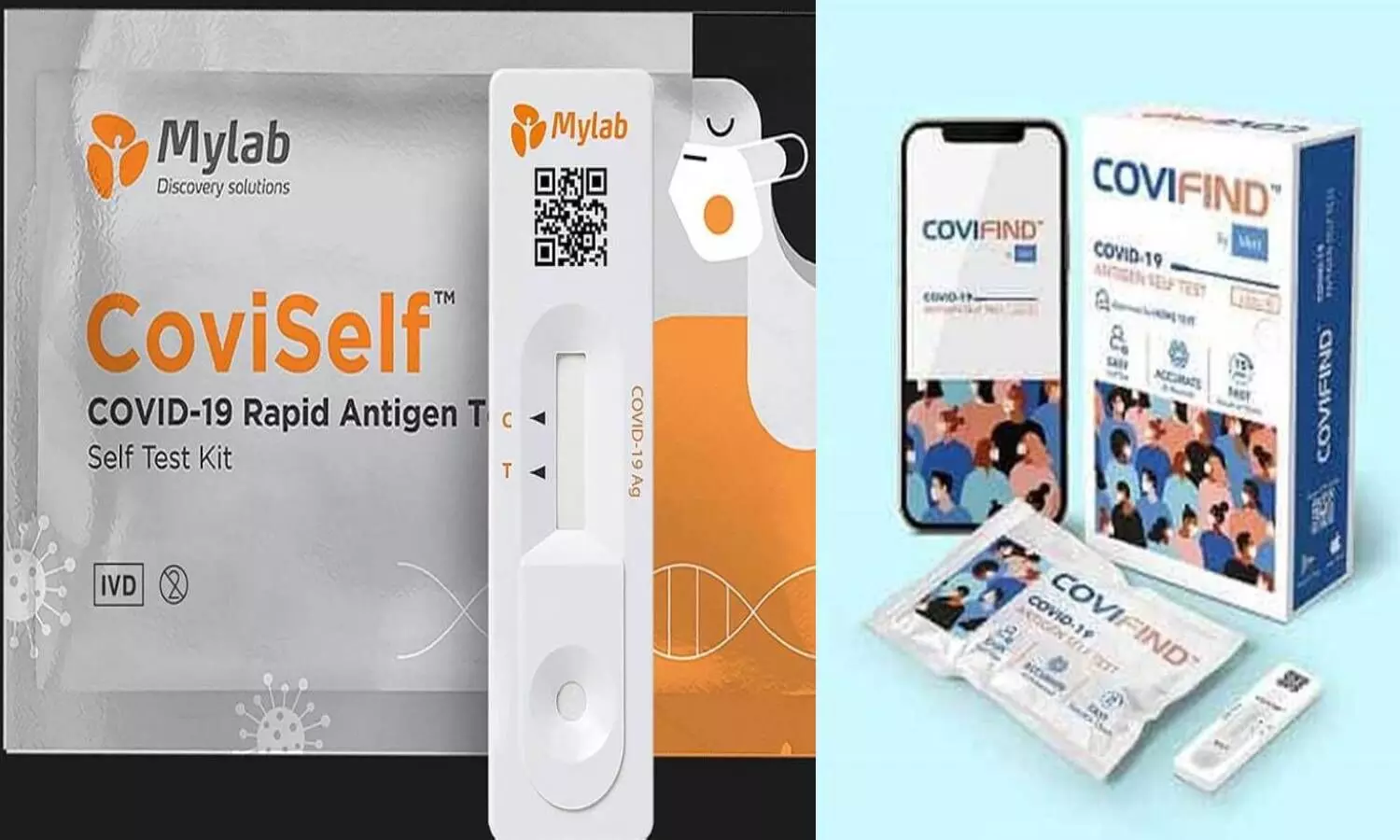Covid-19 self-testing kits: All you need to know
As the third wave of the pandemic looms, more and more people are purchasing self-testing kits. Like in Delhi and Mumbai, sales of self-testing kits also increased in Telangana in the last few weeks.
By Nimisha S Pradeep
Hyderabad: Indian Council of Medical Research (ICMR) has approved seven Covid-19 home/self-testing Rapid Antigen Tests (RATs).
ICMR-approved list includes CoviSelf by MyLab Discovery Solutions, PanBio by Abbott Rapid Diagnostics Division, CoviFind by Meril Diagnostics, Angcard by Angstrom Biotech, CliniTest by Healgen Scientific Limited, ULTRA by S.D. Biosensor Healthcare, Abcheck by Nulife Care. All six out of seven except Angcard (who uses saliva) use nasal swab samples for testing.
According to ICMR, these RAT kits showed a sensitivity of 50% and above and specificity of 95% and above. Sensitivity tells how well a test can detect the presence of a Covid or the probability of actual positives. Specificity on the other hand tells how well a test can confirm the absence of Covid or the probability of actual negatives.
As the third wave of the pandemic looms, more and more people are purchasing self-testing kits. Like in Delhi and Mumbai, sales of self-testing kits also increased in Telangana in the last few weeks.
"Its sales were 60% earlier and now they have gone up to 130%. One of the agencies sold 1000 kits in the last one week," said Charan, a pharma entrepreneur based in Hyderabad.
How to use a home/self-testing kit? How efficient are these tests in detecting Covid-19?
A home/self-testing kit is very similar to a Rapid Antigen Testing (RAT) kit. The only difference is that a person does it all by himself or herself at home.
Compared to an RT PCR which takes 24 hours to give the result or even a RAT test that takes 30 minutes to produce the result, a self-testing kit gives the results in just 15 minutes. On the other hand, the probability of false-negative results is higher ie; the chance of a patient testing negative even when he has the infection is high.
"It is very useful as it avoids visits to a hospital especially during these times when they are overcrowded. It helps to redirect potential people who could spread the infection or get infected and instead makes way for testing at home and taking virtual medication thereafter," says Dr.Khizer Hussain Junaidy, Resident Doctor, Gandhi Hospital in Hyderabad.
ICMR recommends that if symptomatic person tests negative in self-testing, they must go for an RT PCR test. If a person tests positive in self-testing, there is no need for any further confirmation as per ICMR guidelines.
Another concern is the efficiency in sample collection when one is doing it by oneself compared to an expert/ a third person collecting the sample. "The swab has to be inserted into the nasopharynx and rotated to get the sample. When the same person is doing it, there could be a hesitation fearing irritation that results in inadequate quantity of sample collection," says Dr.Khizer.
But at the same time, he also adds that it is much better than taking the risk of getting exposed to infected people or infecting other people while visiting a hospital.
Dr.Khizer suggests two brands of self-testing kits- CoviSelf and CoviFind, both approved by ICMR. Here is a step-by-step guide on how to use it.
CoviSelf
MyLab's CoviSelf is the first self-testing kit to be approved by ICMR in May 2021.
Step 1: Find a clean place to do the test, sanitize the surface of the table you place the kit.
Step 2: Wash your hands thoroughly and ensure it is dry while you perform the test
Step 3: Tear the pouch of the self-test kit. The contents of the kit include a user manual, a pre-filled extraction tube ( already filled with the liquid), a sterile nasal swab, a test card, and a waste disposal bag.
Step 4: Before doing the test, download the MyLab CoviSelf app from Google Playstore or Android IOS on your mobile phone. Fill in the credentials.
Step 5: Take the pre-filled extraction tube and tap it gently on the table so that all the liquid settles at the bottom of the tube.
Step 6: Take the swab from the tail end and ensure not to touch the head end of the swab that is inserted into the nose.
Step 7: Carefully insert the swab into both your nostrils one after the other up to 2 to 4 cms or until it reaches a resistance point. Roll the swab five times inside each nostril.
Step 8: Dip the nasal swab sample in the extraction liquid. Swirl the nasal swab in the tube 8 to 10 times. Find the breakpoint and break the swab.
Step 9: Cover the tube with the nozzle cap and tighten it.
Step 10: Take the testing card and add two full drops of the liquid on the testing card by pressing the tube. Wait for 15 minutes for the results to appear.
Note: Results appearing after 20 minutes are considered invalid.
At 15 minutes, the app alerts you with the test result. You can download the result from the link provided in the app.
If a red line appears on the quality control mark C, it means that Covid-19 is not found in the sample. If a red line appears on both control mark C and test mark T, it shows the presence of Covid-19 in the sample.
Step 11: Put the used swab, extraction tube, and other contents into the waste disposal pouch and throw it away safely.
The CoviFind self-testing kit also requires a similar procedure to be followed for testing.
Both these self-testing kits are available at a price of Rs.250a and can be bought online or from the nearest pharmacy.